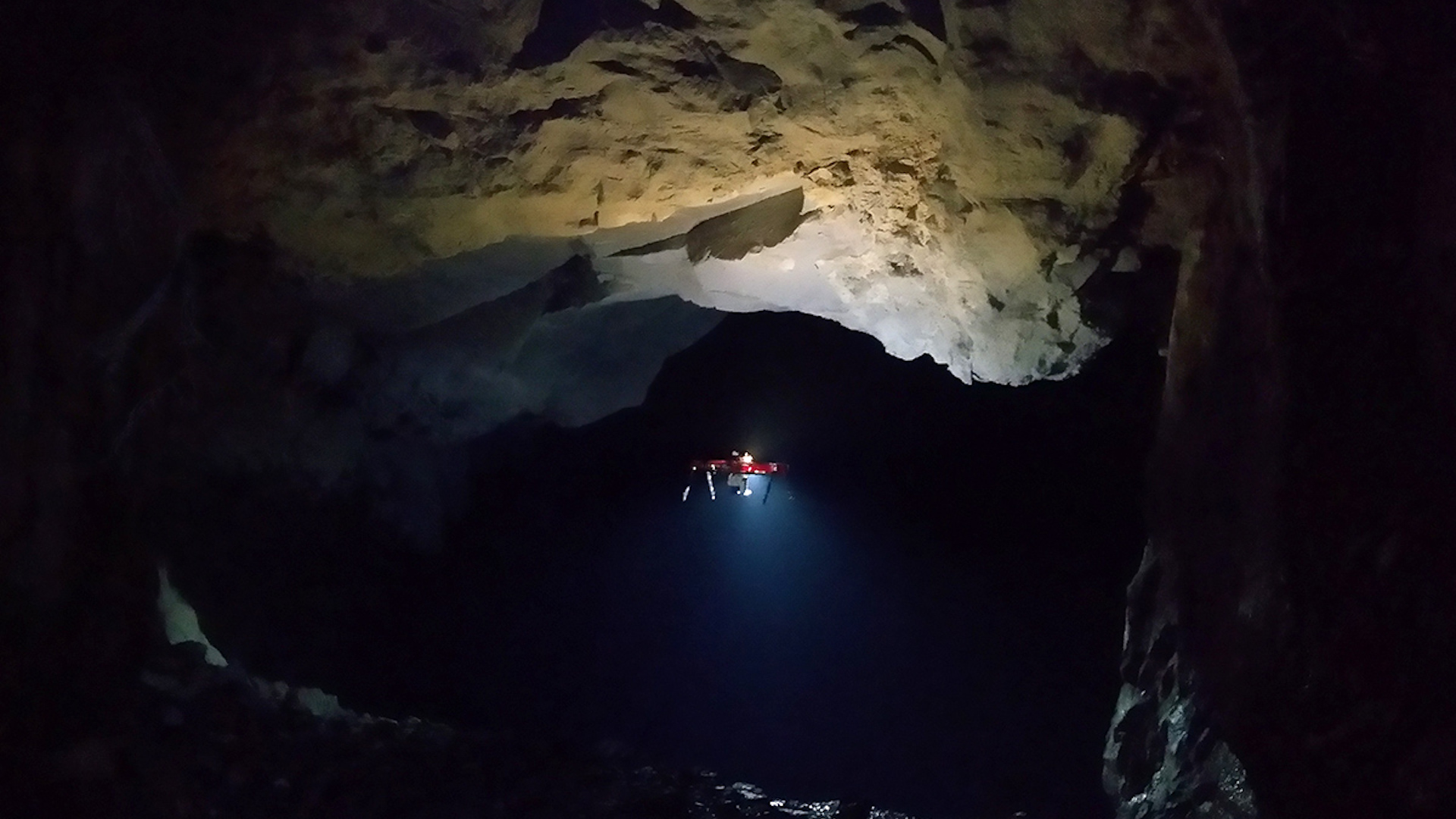

Researchers at Swedish company Inkonova are developing a drone that can autonomously map underground mines.
This is a fairly big advancement, as drones traditionally require GPS signals to navigate—signals that don’t reach that far below the surface. We recently reported on a mining drone that can assist companies in more safely and efficiently analyze blast data and guarantee that no person is in an area of danger. Ahmed AlNomany and his team of researchers, however, are focused on a different aspect of the mining industry.
According to New Scientist, the unmanned aerial vehicle can transition from flying and rolling, to most efficiently navigate underground terrain. It’s not easy finding a new way of having a drone autonomously maneuver without the use of traditional satellite signals.
“It’s complicated because we are trying to invent another way of positioning using bits and pieces of technologies,” AlNomany tells New Scientist.
Fortunately, the team spearheading this new technology is already solving bits and pieces of its conundrum using an entirely new approach they call ‘SLAM’.
Laser scanners calculate the distance between the drone and objects around it, which allow the UAV to continuously create a map of the environment, according to New Scientist. Recently, Inkonova manually piloted their TILT Ranger drone and used the SLAM method to completely digitally map a section of an underground mine in Mali in a mere 10 minutes. The mapped area had a volume of about 30,000 cubic meters, the size of a large lecture hall. AlNomany is already accustomed to this impressive ability, claiming that “it’s not a big challenge to capture such zones quickly.”
Besides digitally mapping its surroundings, the drone simultaneously uses accelerometers, sensors that help it position and move itself without the currently-required GPS signals.
According to the BBC, the drone has already proven itself to autonomously stabilize itself in underground areas.
The rolling abilities of this UAV come in handy once it encounters an irregularly-shaped area, like a narrow pathway. Using its wheels, the drone switches from flying to rolling, and moves on.
“If it is near a wall, the drone will adapt to it and climb it instead of flying,” AlNomany says.
We recently reported on an “event-based” camera being developed at the University of Zurich, which would rid our current requirement of having enough light to effectively use a drone in near-dark conditions. We also learned about Rocketmine and how its drones help mining operations.
Drone advancements are moving quickly in industries such as agriculture, mining, inspection and security, and this flying and rolling drone is simply another piece of the puzzle.